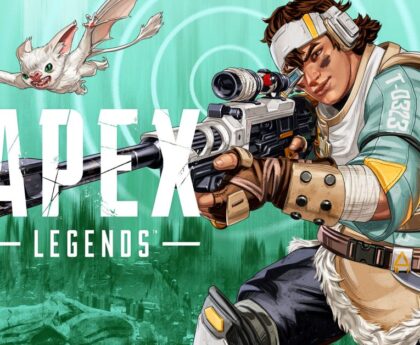The Game Development Process
Game development begins with an idea, a spark of inspiration that sets the wheels in motion. From there, a team of professionals collaborates to transform this idea into a playable and engaging experience. The process typically involves the following stages
Conceptualization
Developers brainstorm and refine the game concept, defining its genre, gameplay mechanics, art style, and narrative elements. This stage lays the foundation for the entire development process.
Design
The game’s designers create detailed plans, including level layouts, character designs, user interfaces, and game mechanics. Balancing player engagement, challenge, and progression are critical considerations during this phase.
Art and Assets Creation:
Artists and graphic designers bring the game to life visually, crafting stunning environments, characters, animations, and visual effects. Attention to detail and the establishment of a cohesive art style are vital to creating an immersive experience.
Programming
Skilled programmers write the underlying code that powers the game. They implement gameplay mechanics, artificial intelligence, physics simulations, and networking capabilities. Programming is the backbone of a game, translating ideas into interactive reality.
Audio Design
Sound designers and composers create captivating soundtracks, ambient sounds, and sound effects. Audio adds depth, emotion, and atmosphere to the gaming experience, enhancing immersion and storytelling.
Quality Assurance
Game testers meticulously playtest the game, searching for bugs, glitches, and inconsistencies. This stage ensures a polished and bug-free gaming experience before release.
Iteration and Refinement
Feedback from playtesters and user input guide developers in refining the game. Iterative cycles of testing, gathering feedback, and making improvements help enhance gameplay, balance, and overall user satisfaction.

Challenges in Game Development
Game development is not without its challenges. Teams face various hurdles throughout the process, such as:
Technical Limitations
Creating games that run smoothly on various platforms and hardware configurations can be challenging, requiring optimization and performance tuning.
Scope Management
Balancing the desired scope of the game with available resources, time constraints, and budget is crucial. Scope creep, where the project expands beyond initial plans, must be managed effectively to avoid delays and budget overruns.
Team Collaboration
Coordination among multidisciplinary teams is essential for successful game development. Clear communication, project management, and teamwork are vital for smooth progress.
Player Engagement
Creating gameplay that is compelling, challenging, and enjoyable for players is an ongoing pursuit. Balancing difficulty, progression, and player feedback is crucial to keep players engaged.
Arising Trends in Game Development
Game development is a dynamic field that continually evolves alongside technological advancements and player prospects. Several arising trends have shaped assiduity in recent times
Virtual Reality( VR) and stoked Reality( AR)
The rise of VR and AR technologies has opened up new possibilities for immersive gaming gests. inventors are creating games specifically designed for VR headsets, allowing players to be completely immersed in virtual worlds. AR games, on the other hand, blend the virtual and real worlds, offering unique gameplay guests through mobile bias.
Cross-Platform and Cloud Gaming
Cross-platform gaming enables players to enjoy games seamlessly across different biases and operating systems, similar to consoles, PCs, and mobile biases. pall gaming allows players to stream games directly to their bias, barring the need for high-end tackle and expanding availability.
Procedural Generation
Procedural generation ways are gaining fashionability in game development. This approach uses algorithms to induce game content stoutly, similar to situations, surroundings, searches, and indeed narratives. It allows for endless possibilities and reduces development time by automating content creation.
Player-Generated Content
Games that allow players to produce and partake in their content have gained traction. stoner- generated content( UGC) empowers players to design situations, characters, mods, and indeed entire game gests. This fosters an active community and extends the lifetime of games by furnishing a constant sluice of fresh content.
Live Service and Games as a Service( GaaS)
rather than releasing a game as a one-time purchase, inventors are espousing a live service model. This involves continuously streamlining and expanding the game over time, frequently through regular content updates, events, and microtransactions. GaaS allows inventors to engage with players and maintain long-term profit aqueducts.

The part of Indie Game Development
Indie game development has endured a swell in recent times, driven by passionate individualities and small brigades who produce unique and innovative games. Indie inventors have the freedom to trial unconventional gameplay mechanics, art styles, and liar ways. Platforms like Steam ,itch.io, and indie exhibits give exposure and openings for indie games to reach a wide followership.
The Significance of Game Design
Game design is a critical aspect of game development, encompassing the mechanics, rules, progression systems, and overall player experience. Effective game design ensures that players are engaged, challenged, and awarded. It involves understanding player psychology, balancing difficulty angles, designing meaningful choices, and casting compelling narratives. A well-designed game can leave a continuing impact on players and contribute to their success.
Collaboration and Tools in Game Development
Game development thrives on collaboration and the use of technical tools. brigades frequently use design operation software, interpretation control systems, game machines( similar to Unity and Unreal Engine), and asset creation tools( similar to Photoshop and Maya). These tools enable effective workflow, asset operation, and streamlined communication among platoon members.






